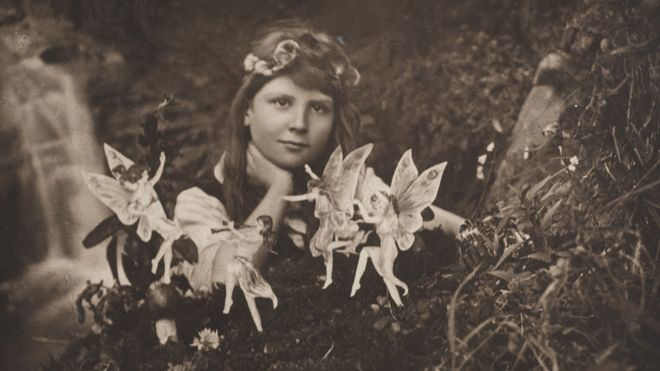The Cottingley Fairies
- Melanie Roussel
- Apr 7, 2019
- 3 min read
Do you believe in the Cottingley Fairies?

The Cottingley Fairies were a series of five photographs taken in 1917 by cousins Elsie Wright, 16 and Frances Griffiths, 9.
They lived in Cottingley, near Bradford in England. One day, they told their parents they'd seen fairies in the garden. Naturally, perhaps, they were told not to tell stories. So, to prove it, they borrowed Arthur Wright's camera. They returned with a set of five photos which would become known as the Cottingley Fairies. Elsie's father didn't believe them, dismissing the images as cardboard cut-outs, or tampering with the camera.
A year later in 1918, Frances sent a letter to her friend in Cape Town, South Africa with a copy of one of the fairy photos. In her letter, she said:
It is funny, I never used to see them in Africa. It must be too hot for them there.
The Cottingley Fairies became famous in 1919. Elsie's mother, Polly Wright attended a lecture about fairies at the Theosophical Society. In a moment which probably haunted her daughter, she showed the speaker two of the fairy photos. Not long afterwards, the photos were displayed at the Theosophical Society annual conference in Harrogate.

Hoax
Years later, in the 1980s, the cousins confessed that these images were hoaxes. They explained how they cut out images from children's books and stuck them into the ground. The camera they used and the photographs are now at the National Science and Media Museum in Bradford.
Even to this day, these Cottingley Fairies are loved.
Even if we no longer believe in fairies, these images still seem to speak to us.
When these photographs went on auction, they were predicted to fetch up to £2000. In the end, it earned £20,000, 10 times the estimate. And even as I was writing this post, I found yet another article announcing that the photos will be up for auction again and are now expected to fetch up to £70,000.
My favourite part of this story is the fact that one of the many thousands of Cottingley Fairies believers was the one and only Sir Arthur Conan Doyle. In fact, he later used the photographs in an article he wrote in The Strand where he wrote about other accounts of fairy sightings. He said:
The recognition of their existence will jolt the material twentieth-century mind out of its heavy ruts in the mud, and will make it admit that there is a glamour and mystery to life.
The question is why?

The initial belief in the fairies was perhaps understandable. The point of the Theosophical Society is it was talking to people already inclined to believe in fairies. One of the key beliefs of this group is that humanity is continually on a cycle of evolution towards perfection. For the speaker, Gardner, these photographs were perfect for his message.
And the cousins were children at the time and under increasing pressure the more famous these images became. The book Reflections on the Cottingley Fairies contains a letter written by Frances in 1983, saying:
I hated those photographs from the age of 16 when Mr Gardner presented me with a bunch of flowers and wanted me to sit on the platform with him. I realised what I was in for if I did not keep myself hidden.

After WW1 and the horrendous loss of so many people to the Spanish Flu in 1918, people began moving towards spiritualism in a big way. Life after death and the existence of a soul were ideas which were massively comforting to weary and grieving people. Arthur Conan Doyle, in his 1918 work The New Revelation, wrote:
The conclusion, then, of my long search after truth, is that in spite of occasional fraud, which Spiritualists deplore, and in spite of wild imaginings, which they discourage, there remains a great solid core in this movement which is infinitely nearer to positive proof than any other religious development with which I am acquainted.
I'm a huge fan of these stories, not for the hoaxes themselves but for why we believe them. If you're a fellow lover of hoaxes check out my posts on the Moon Hoax and the War of the Worlds Panic. And if you're after some fairy tales, check out this post over on Icy Sedgwick's site, the Queen of Folklore!
Here is an interview with the cousins.


Comments